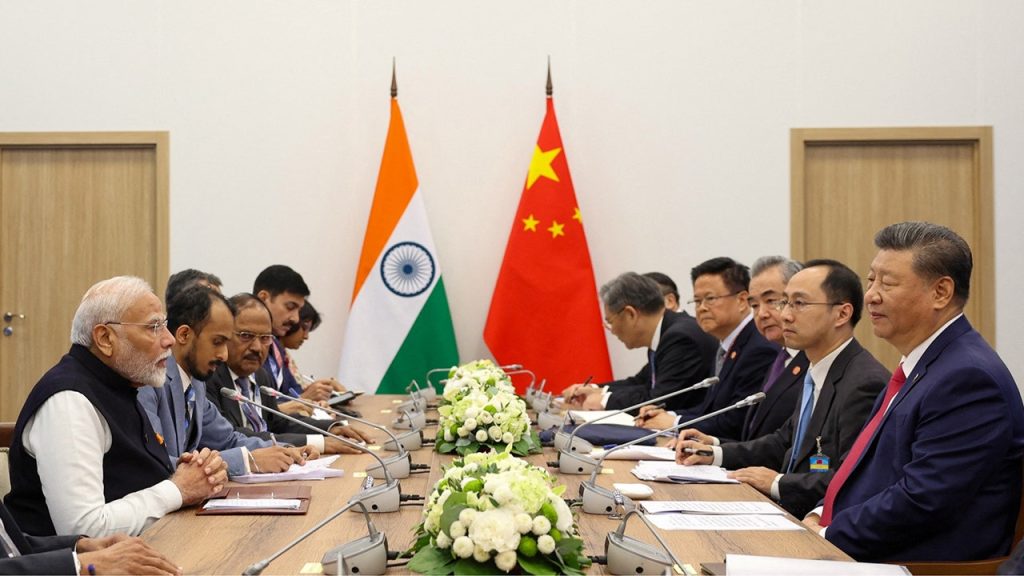India and China have recently begun implementing an agreement to end a military standoff on their disputed Himalayan border, marking a significant thaw between the two Asian giants since deadly clashes between their armies occurred four years ago. Troops stationed at two points on the frontier in India’s Ladakh region in the western Himalayas have started pulling back, with the process expected to conclude by the end of the month. This latest development comes after the two nations struck a deal on patrolling the frontier, paving the way for the first formal talks in five years between President Xi Jinping and Prime Minister Narendra Modi on the sidelines of the BRICS summit in Russia.
The spokesperson for China’s foreign ministry, Lin Jian, acknowledged the progress made in implementing the agreed-upon solution between the two countries’ frontline armies. In New Delhi, a government official revealed that troops on both sides have begun withdrawing from the areas of Depsang and Demchok, the last remaining points where they were standing face-to-face. The returning troops will also dismantle structures like huts and tents and remove vehicles brought to positions that were established before the conflict started in April 2020, allowing them to resume patrolling along the frontier as they did before the standoff began. However, India’s foreign ministry had not made any immediate comments on these recent developments.
The new pact is expected to not only help improve political and business ties between India and China but also heal the wounds left by the deadly military clash that occurred in 2020, resulting in the loss of 20 Indian and four Chinese troops in the Galwan Valley. While both sides had previously pulled back troops from five other face-off points, this marks the first withdrawal in over two years. Despite the agreement to boost communication and cooperation made by Xi and Modi, officials in India have stated that New Delhi will proceed cautiously and take incremental steps towards enhancing economic ties with Beijing, considering the trust deficit that has developed over the last four years.
India had taken various measures against China during the tensions, such as severing direct air links, banning numerous Chinese mobile applications, and implementing strict vetting processes on Chinese investments. However, it is now considering reopening air links and fast-tracking visa approvals to complement the recent easing of tensions. Nonetheless, India is not planning to reverse all the steps it took against China in the near future. The border issue between the two countries dates back to 1962 when they went to war over the undemarcated border, which has remained a persistent point of contention in their relationship. Despite this recent positive development, both countries will need to work diligently towards building trust and cooperation to ensure lasting peace and stability in the region.


